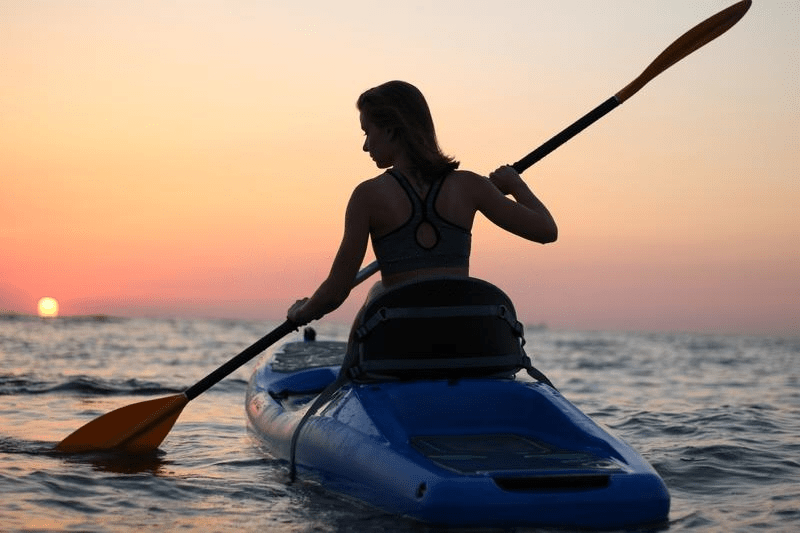In recent years, the sport of kayaking has seen a surge in popularity, especially among outdoor enthusiasts and adventure seekers. One of the main reasons for this is the introduction and widespread availability of inflatable kayaks. These practical and versatile water vessels are not only easier to transport and store than their hardshell counterparts, but they also offer a more accessible and affordable entry point into the exciting world of paddle sports. In this ultimate guide, we will cover everything from the different types of inflatable kayaks and essential features to look for, to maintenance and safety tips for a confident and easeful approach to navigating the waters.
Types of Inflatable Kayaks
Inflatable kayaks come in a variety of styles and designs, each suited to different activities and environments. Some of the most common types include:
- Sit-on-top Kayaks: Ideal for beginners and warm weather paddling, sit-on-top kayaks allow for easy entry and exit, as well as effective self-draining.
- Sit-in Kayaks: These kayaks offer a more traditional kayaking experience, with better protection from the elements and potential for greater speed and control.
- Tandem Kayaks: Built for two paddlers, tandem kayaks are perfect for couples, families, or friends looking to share a kayaking adventure.
- Fishing Kayaks: Specially designed with anglers in mind, fishing kayaks come equipped with various features like rod holders, storage compartments, and anchor systems.
- Whitewater Kayaks: Made for navigating rapids and rough waters, Whitewater kayaks boast a sturdy design and performance-enhancing features like rocker and chines.
Features to Look for in an Inflatable Kayak
When shopping for an inflatable kayak, there are several features worth considering:
- Material: The durability and longevity of your inflatable kayak depend largely on the quality of its material. Look for kayaks made from heavy-duty PVC, Hypalon, or Nitrylon.
- Chamber design: Multiple air chambers provide increased safety in case of puncture, as well as improved stability and buoyancy.
- Weight capacity: Ensure the kayak can support your weight, along with any additional gear or passengers.
- Tracking and manoeuvrability: Features like skegs, fins, or tracking strips can enhance your kayak’s overall handling and performance.
- Portability and storage: Consider how compact and lightweight the kayak is when deflated, and whether it comes with a storage/carry bag.
- Seating: opt for adjustable and comfortable seats for an enjoyable kayaking experience.
- Accessories: Some inflatable kayaks include useful extras like paddles, pumps, or repair kits to get you started.
Choosing the Right Inflatable Kayak for You
To find the perfect inflatable kayak, ask yourself these key questions:
- What type of paddling do I plan to do?
- What is my preferred kayaking environment (lakes, rivers, oceans, etc.)?
- Do I need a single or tandem kayak?
- Will I use my kayak primarily for recreational or fishing purposes?
- What is my budget?
By considering these factors, you can narrow down your choices and find the inflatable kayak best suited to your needs and preferences.
Inflatable Kayak Maintenance
Proper maintenance of your inflatable kayak is crucial for ensuring its longevity and performance. Follow these guidelines to keep your kayak in optimal condition:
- Regularly clean your kayak using mild soap and water, avoiding harsh chemicals or abrasives that may damage the material.
- Inspect your kayak for signs of wear or damage before each use, addressing any necessary repairs immediately.
- Store your kayak properly by deflating it, rolling it up, and placing it in its storage bag away from direct sunlight and heat sources.
- Patch punctures or leaks promptly, using the provided repair kit or acquiring one suited for your kayak’s material.
Safety Tips for Inflatable Kayaking
Kayaking, like any water-based activity, involves inherent risks. To ensure a safe paddle sports experience, keep the following safety tips in mind:
- Always wear a properly fitting personal flotation device (PFD).
- Never exceed your kayak’s weight capacity or carry more passengers than it is designed for.
- Plan your route according to your skill level and familiarity with the area.
- Monitor weather and water conditions before and during your paddle.
- Carry safety and emergency equipment like a whistle, bilge pump, and towline.
- Inform someone of your intended route and estimated return time.
Conclusion
Inflatable kayaks offer a unique and convenient way to explore the great outdoors, providing an easy and accessible entry point into the world of paddle sports. By understanding the various types of inflatable kayaks, discerning which features suit your needs, and applying appropriate maintenance and safety practices, you can confidently navigate the waters and make the most of your kayaking adventures. With this ultimate guide at your disposal, you are well equipped to embark on a fun and exhilarating journey into the world of inflatable kayaking.

